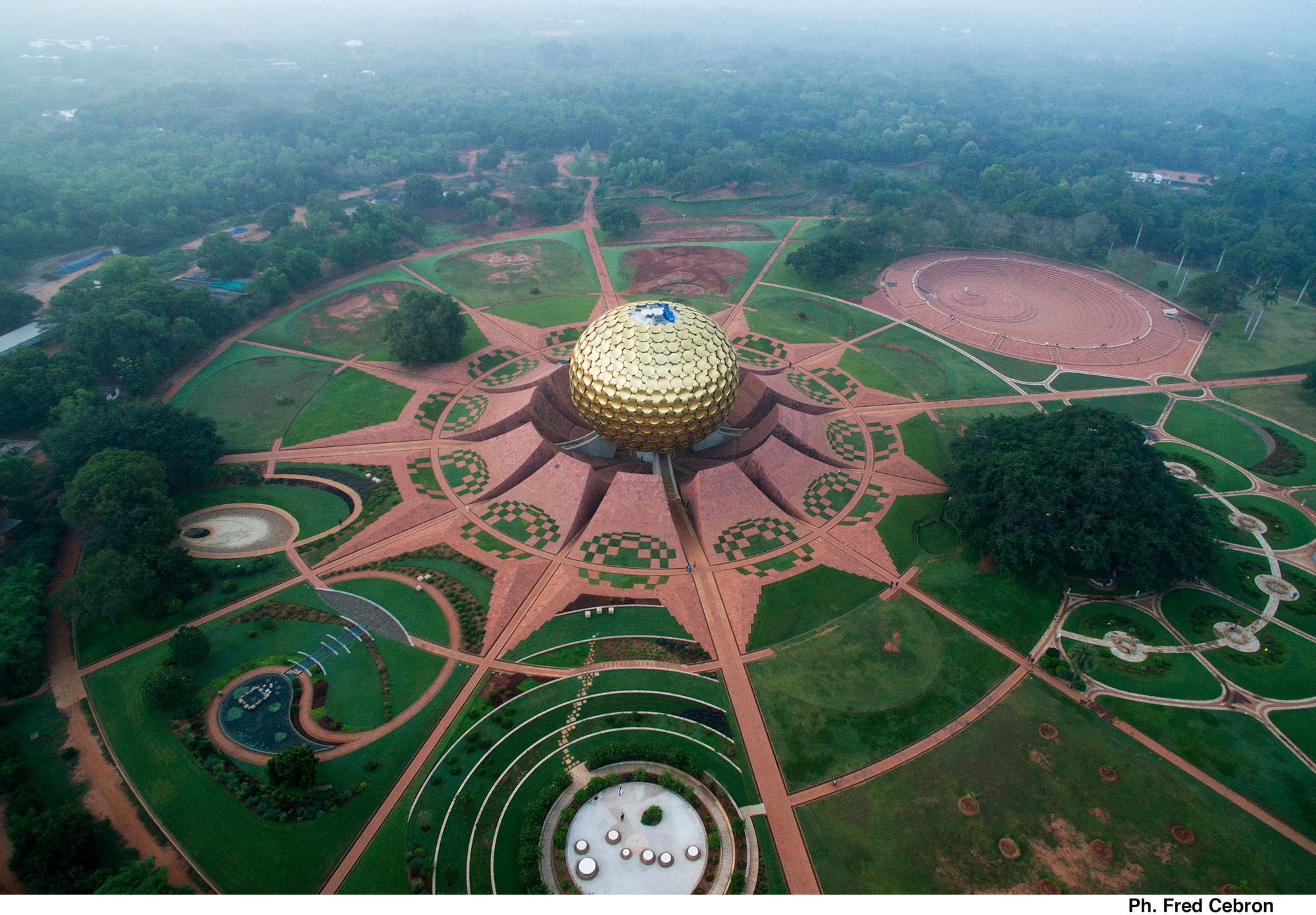
The Untold Story of Pondicherry's City of Dawn: Revealing its Historical Significance
Welcome to the mystical land of Pondicherry, a city that holds within its cobblestone streets and French-inspired architecture a rich tapestry of history waiting to be unraveled. While it may be known as a quaint seaside town with charming cafes and colorful houses, there is an untold story lurking beneath the surface—one that reveals Pondicherry’s true historical significance as the City of Dawn. Join us on this journey as we peel back centuries of secrets, shedding light on the hidden tales that have shaped this captivating Indian enclave. Get ready to be captivated by tales of conquests, cultural fusion, and spiritual awakening in our exploration of Pondicherry’s past like never before!
Introduction to Pondicherry’s City of Dawn
Pondicherry’s City of Dawn, also known as Auroville, is a unique and fascinating town located in the southern state of India, Tamil Nadu. Founded in 1968 by Mirra Alfassa, who was also known as “The Mother,” this experimental township was created with the aim of creating a universal town where people from all backgrounds and nationalities could live together in peace and harmony.
The idea for Auroville (City Of Dawn) came about when Sri Aurobindo, an Indian philosopher and spiritual leader, envisioned a place where people could come together to work towards human unity and progress. The Mother, who was his spiritual collaborator, took on the task of bringing this vision to life by acquiring land near Pondicherry to create what would later be called Auroville.
Today, Auroville (City Of Dawn) is home to over 2,800 residents from more than 50 countries. Its population includes individuals from diverse cultures, religions, and professions living together with the common goal of working towards human unity. The city has its own unique governance system that allows for self-sufficiency and collective decision-making.
One of the most striking features of Auroville is its architectural design, which reflects the principles of sustainability and community living. The city is divided into different zones representing different aspects, such as residential areas, industrial areas, cultural centers, educational institutions, and green spaces. Each zone has been carefully planned to promote sustainable practices such as renewable energy sources and organic farming.
Historical Background and Significance of the City
Pondicherry, also known as Puducherry, is a vibrant coastal city situated on the east coast of India. It holds a rich and diverse history that dates back to ancient times. The city has been ruled by various dynasties, including the Cholas, Pallavas, Vijayanagar Empire, and the French colonialists.
The earliest recorded history of Pondicherry can be traced back to the 2nd century BCE, when it was a part of the Maurya Empire under Emperor Ashoka. During this time, it served as an important trading port for various goods such as spices, silk, and pearls. It was also a center for learning and religious activities, with Buddhist monasteries and Hindu temples dotting its landscape.
In the 16th century, Pondicherry came under the rule of the mighty Vijayanagar Empire. Under their reign, the city flourished both culturally and economically. However, in 1638, it was captured by the Sultanate of Bijapur, which held control over it until 1674, when they were defeated by Shivaji Maharaj’s Maratha army.
In 1674, Pondicherry was handed over to France by King Louis XIV as part of a treaty between France and England. France saw great potential in Pondicherry due to its strategic location on India’s southeastern coast and its thriving trade relations with other countries in Southeast Asia.
The Journey of the City to Becoming a UNESCO World Heritage Site
Pondicherry, also known as Puducherry, is a quaint coastal town in the southern Indian state of Tamil Nadu. Over the years, it has gained international recognition for its unique blend of French and Indian cultures, making it a popular tourist destination. However, what many people do not know is that this charming city was once part of a larger struggle to preserve cultural heritage and gain recognition on a global level.
The journey to becoming a UNESCO World Heritage Site began in the 1960s, when Pondicherry was under French colonial rule. The then Chief Minister of Tamil Nadu, C.N. Annadurai, recognised the importance of preserving the city’s rich history and culture. He established the Pondicherry Heritage Committee with the aim of safeguarding and promoting historical monuments and buildings in the city.
Under his leadership, efforts were made to restore several French-style buildings that had fallen into disrepair over time. These included iconic structures such as the Aurobindo Ashram, Raj Niwas (the residence of the Lieutenant Governor), and several churches like Notre Dame des Anges Cathedral. The restoration work not only helped preserve these landmarks but also brought back their original charm.
In 1970, with support from UNESCO (United Nations Educational, Scientific, and Cultural Organisation), Pondicherry was declared a “Heritage Town.” This recognition further encouraged efforts towards the conservation and restoration of historic sites in the city.
Architectural Marvels and Cultural Influences in the City
Pondicherry, also known as Puducherry, is a coastal city in the South Indian state of Tamil Nadu. It is a city rich in history and cultural influences, with a unique blend of French and Indian architecture. The city’s architecture reflects its diverse past, from its ancient roots as a trading port to its colonial era under French rule.
One of the most striking features of Pondicherry’s architectural landscape is the presence of several well-preserved colonial buildings influenced by French architecture. The French ruled Pondicherry for over 300 years, leaving their mark on the city’s infrastructure and culture. This can be seen in the charming streets lined with brightly colored houses adorned with intricate ironwork balconies and large courtyards.
The most iconic landmark in Pondicherry that showcases its architectural marvels is undoubtedly the White Town area, or “Ville Blanche,” as it was known during French rule. This part of the city has retained its old-world charm with cobbled streets, tree-lined boulevards, and grand mansions that served as residences for French officials. Some notable examples include the Raj Niwas (Governor’s House), Palais de Justice (Court House), and Hotel de Ville (City Hall).
Another significant influence on Pondicherry’s architecture comes from its Tamil heritage. The Tamil people have inhabited this region for centuries before European colonisation, resulting in an amalgamation of styles that are evident in many buildings across the city.
The Spiritual and Philosophical Aspects of the City
Pondicherry, also known as Puducherry, is a city that holds immense spiritual and philosophical significance. It has been a hub for seekers of truth and enlightenment for centuries, attracting people from all over the world with its tranquil surroundings and rich cultural heritage.
The city’s spiritual roots can be traced back to the 17th century, when it was established as a French colony. The French influence can still be seen in the architecture and culture of the city. However, it was not until the arrival of Sri Aurobindo and The Mother in 1910 that Pondicherry truly became a center for spiritual evolution.
Sri Aurobindo was a revolutionary turned philosopher who believed in the concept of Integral Yoga – a path that aims to unite all aspects of an individual’s being, including their physical, mental, emotional, and spiritual selves. He chose Pondicherry as his abode because he saw it as a place where people from different cultures could come together to pursue this integral way of life.
Along with his spiritual partner, Mirra Alfassa (known as The Mother), Sri Aurobindo established the Sri Aurobindo Ashram in Pondicherry. This ashram became a haven for seekers looking to explore their inner selves and connect with something greater than themselves. Today, it continues to attract thousands of visitors every year who seek guidance on their own spiritual journeys.
Exploring the Unique Lifestyle and Community of Auroville, the Experimental Township within the City
Exploring the Unique Lifestyle and Community of Auroville, the Experimental Township within the City
Auroville, also known as “the City of Dawn,” is a remarkable experimental township located in Pondicherry, India. This unique community was founded in 1968 by Mirra Alfassa, better known as “The Mother,” and her spiritual collaborator Sri Aurobindo, with the purpose of creating a universal town where people from all walks of life can live together in peace and harmony.
One of the most striking features of Auroville (City Of Dawn) is its diverse population, which consists of people from over 50 different countries. This multicultural mix creates a melting pot of ideas, beliefs, and cultures that make Auroville a truly international community. The residents come from various backgrounds and professions, such as artists, architects, engineers, teachers, farmers, and more, all united by their shared vision for a sustainable future.
The lifestyle in Auroville is centered around the principles of sustainability and self-sufficiency. The community follows an organic way of life with a strong focus on environmental conservation. They use eco-friendly practices like rainwater harvesting, solar power generation, and waste management to reduce their impact on the environment.
Another unique aspect of life in Auroville is its emphasis on spirituality. The community draws inspiration from the teachings of Sri Aurobindo and The Mother’s philosophy, which emphasises inner growth and self-discovery. Many residents engage in meditation, yoga, or other spiritual practices to connect with themselves.
This city is a must-see spot of Podnicherry.
Disclaimer: La Cedille assumes no responsibility or liability for any errors or omissions in the content of this site
Photo Source www.curriculum-magazine.com
La Cedille - Pondicherry
Away from checking for blue ticks, towards the bright blue ocean. Away from the noise, towards the music.
Address
34 Dumas Street , Pondicherry , White Town
lacedilleindia@gmail.com
+91 90870 19111
Reception 12 Hrs
Ⓒ 2025 La Cedille | ALL RIGHTS RESERVED. Powered by Digital Palmy Inc.
